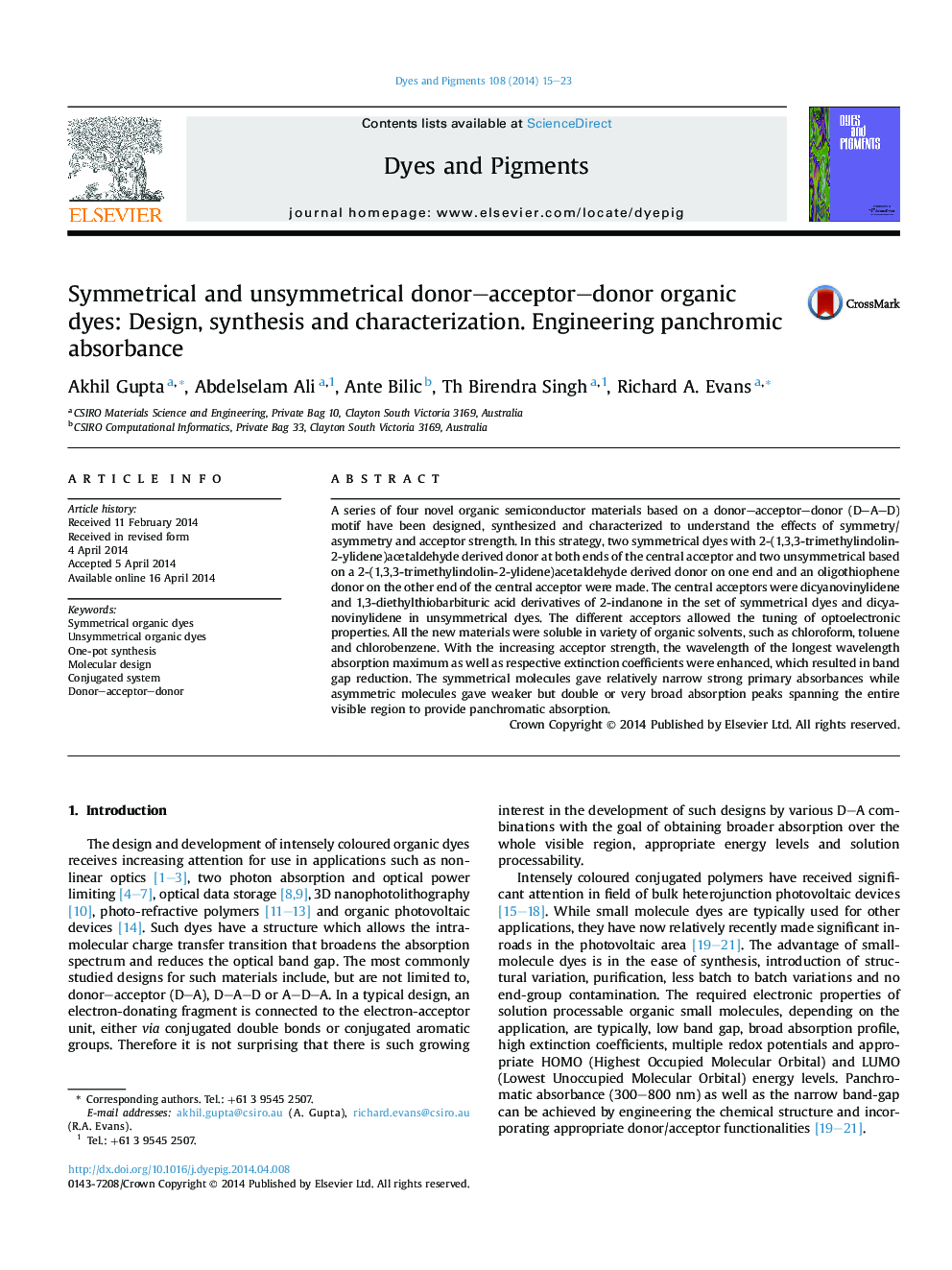| Article ID | Journal | Published Year | Pages | File Type |
|---|---|---|---|---|
| 176070 | Dyes and Pigments | 2014 | 9 Pages |
•We examined the effect of asymmetry on D–A–D dyes.•Symmetry provided narrow absorption in visible spectrum.•Asymmetry provided panchromatic absorption beyond 800 nm.
A series of four novel organic semiconductor materials based on a donor–acceptor–donor (D–A–D) motif have been designed, synthesized and characterized to understand the effects of symmetry/asymmetry and acceptor strength. In this strategy, two symmetrical dyes with 2-(1,3,3-trimethylindolin-2-ylidene)acetaldehyde derived donor at both ends of the central acceptor and two unsymmetrical based on a 2-(1,3,3-trimethylindolin-2-ylidene)acetaldehyde derived donor on one end and an oligothiophene donor on the other end of the central acceptor were made. The central acceptors were dicyanovinylidene and 1,3-diethylthiobarbituric acid derivatives of 2-indanone in the set of symmetrical dyes and dicyanovinylidene in unsymmetrical dyes. The different acceptors allowed the tuning of optoelectronic properties. All the new materials were soluble in variety of organic solvents, such as chloroform, toluene and chlorobenzene. With the increasing acceptor strength, the wavelength of the longest wavelength absorption maximum as well as respective extinction coefficients were enhanced, which resulted in band gap reduction. The symmetrical molecules gave relatively narrow strong primary absorbances while asymmetric molecules gave weaker but double or very broad absorption peaks spanning the entire visible region to provide panchromatic absorption.
Graphical abstractFigure optionsDownload full-size imageDownload as PowerPoint slide
